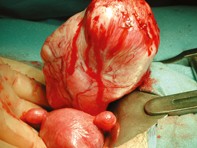Peer Reviewed
Feature Article Obstetrics and gynaecology
Heavy menstrual loss: Part 1. Is it really heavy loss?
Abstract
Heavy menstrual loss (also known as menorrhagia) is one of the most common complaints for which a woman is referred to the gynaecology outpatient clinic. A thorough history is the basis to tease out the particular concerns and the impact on an individual woman’s life. This, after examination and appropriate investigation, will allow discussion about the best management options for each woman.
Key Points
- Heavy menstrual loss (or menorrhagia) is defined as greater than 80 mL per cycle, although in a well fed population a loss of 115 mL per cycle may be a more realistic estimate.
- Up to half the women who report heavy menstrual loss have misinterpreted their loss as being heavy. Management involves explanation and reassurance about the pattern of bleeding and discussion of other concerns the woman might have.
- In approximately 60% of cases of heavy menstrual loss, an underlying pathological condition is found (most commonly, uterine fibroids and endometriosis); in 40%, no cause is found (this is termed dysfunctional uterine bleeding).
- A targeted history and abdominal and pelvic examination can suggest the presence of specific organic pathology or indicate specific investigations (such as transvaginal ultrasound or endometrial sampling).
Purchase the PDF version of this article
Already a subscriber? Login here.

